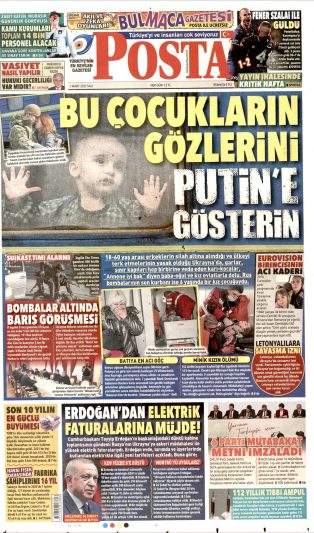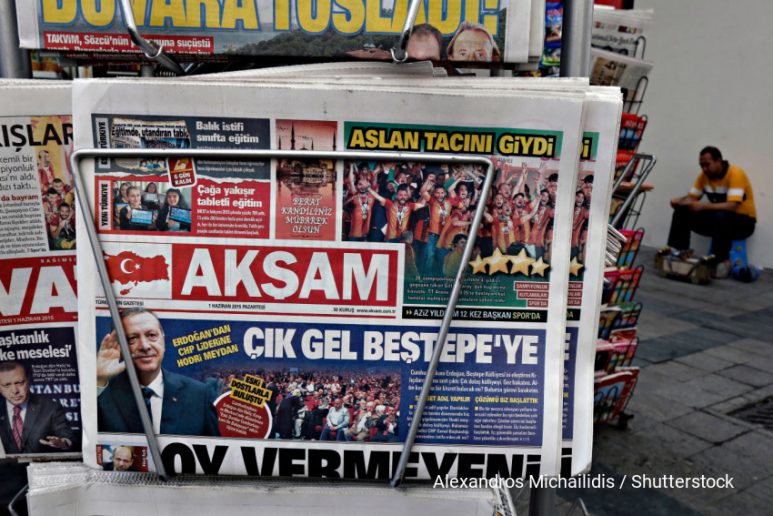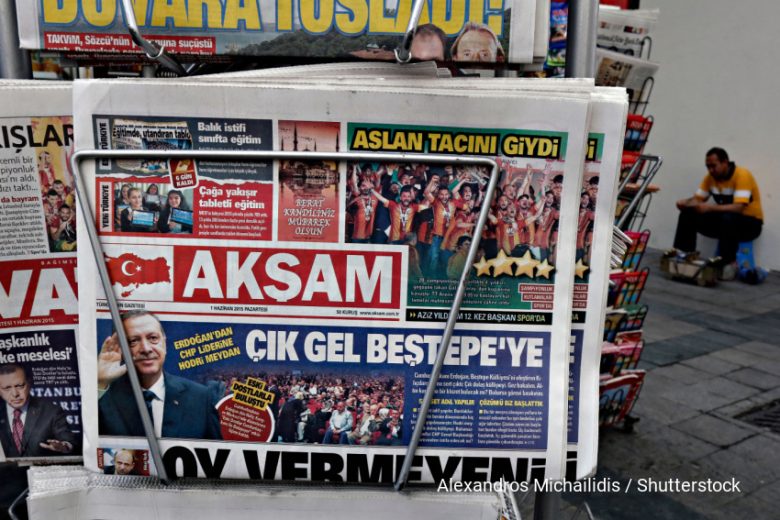By Kaan Göktaş
The Turkish media’s view of Russians and Ukrainians is complex, and their representation depends on the media outlets’ ideological predispositions. The media’s approach to Russians and Ukrainians has significantly changed following Russia’s invasion of Ukraine in February 2022. Thus, even though before the war the Turkish media considered Russians and Ukrainians to be of the same ethnic identity, the change following the war is clear. As the media and politics in Turkey are intertwined, in order to understand the way the media approach the representation of Russians and Ukrainian it is important to understand right wing and left wing perspectives. The Turkish left has traditionally regarded Russia with respect because of the legacy of the Union of Soviet Socialist Republics. For the Turkish right however, the political position regarding Russia constantly changes. The Turkish right generally sees Russia as the heir of communism, therefore, it can be thought that the Turkish right has a negative attitude towards Russia.
Grup Yorum olarak sosyalizmin anavatanında, Moskova'da konserimizi gerçekleştirdik! pic.twitter.com/BSsUoRfSIO
— Grup Yorum (@Grup_YORUM) February 25, 2022
However, Turkey, which has been ruled by a center-right government for many years, has been changing its direction especially in foreign policy in recent years. Therefore, the view of the right of Turkey towards Russia mirrors this shift. For example between 2015 and 2016 Russians were seen in a negative light due to the way Vladimir Putin was seen, yet as Turkey and Russia’s political ties drew closer, the media shift became clear.
Certain Turkish groups see Russia as the leader of the world and establish representation in this way. A group known as the Eurasianists who consider Turkey’s alignment should be with Russia is at the forefront of this. According to them, Russia, which stands against the USA, is fighting a very important struggle. This group argues that by turning Turkey’s face from the West, a cooperation or an alliance with Russia, Iran and China will bring Turkey to a much better place. Turkish media seem to have amplified such views.
As #Putin invades #Russia, #Turkey's Eurasianists, #Erdoğan's former adversaries-turned-allies, promote a trilateral alliance w/ #Russia & #Azerbaijan against the "pro-American junta in #Ukraine," which will "strengthen the region against #NATO's attacks."https://t.co/Y0LR7GQuhh pic.twitter.com/ocyHYjHDXA
— Aykan Erdemir (@aykan_erdemir) February 28, 2022
As mentioned, prior to the conflict, no distinction was made between Russians and Ukrainians in the Turkish media. However, since the invasion, Turkish media has started making a clear distinction between the two groups and two main narratives have emerged: Ukraine as a victim and Ukrainians as heroes. The comparison to Syrians and Afghans whose representation shifts constantly depending on domestic and foreign politics, is inevitable.

One aspect that emerged from the media coverage of the Russia-Ukraine war is the portrayal of both Russian and Ukrainian women which could be described as problematic and their objectification is widespread. Such representations, however, are not new. In general, for the Turkish media, all Russian and Ukrainian women are seen with the same physical characteristics, and are ready to date Turkish men – something that is closely connected to the representation of Turkish masculinity in the media.
This representation in Turkey is so entrenched that it is inconceivable that Russian and Ukrainian women are in the country for any other reason. Such narratives are not new and are connected to the wider representations of foreign women in the media.
One problematic aspect that emerged from the media coverage of the Russia-Ukraine war is the portrayal of both Russian and Ukrainian women which could be described as problematic and their objectification is widespread. Such representations, however, are not new. In general for the Turkish media, all Russian and Ukrainian women are seen with the same physical characteristics, who are ready to date Turkish men something that is closely connected to the representation of Turkish masculinity in the media.
In 2010 researchers in 2010 researchers looked at the way national and local media represent foreign women. Through their results they categorized the representation of foreign women in Turkish media as follows: ‘young, beautiful, nude and easily available to tourists, who are mostly blonde; Eastern Europeans or Russian prostitutes who are causing problems such as prostitution and AIDS; middle-aged or elderly female tourists who always spend their holidays in Antalya or Turkey without exception; good-intentioned volunteers of tourism; females settled in Antalya for work or marriage reasons; foreign women who converted to Islam after marriage or by reading about Islam’.
Although this research was conducted over a decade ago, it seems that negative representations of eastern European women, in this case Ukrainian, has not stopped. Since Russia’s invasion of Ukraine, social media were flooded by derogatory comments against Ukrainian women. Such comments led Turkish women’s movements to respond in support of Ukrainian women. Since Russia’s invasion to Ukraine, social media were flooded by derogatory comments against Ukrainian women. Such comments led Turkish women’s movements to respond in support of Ukrainian women.
Fotoğrafını çektim diye bana teşekkür etti, nasıl mahcup bir andı, anlatamam, sesi duyulsun, görülsün 💥 pic.twitter.com/6YqTFjkxJk
— Evrim Kepenek (@kepenekevrimm) March 8, 2022
Media narratives can shape public opinion. Considering Turkish media’s relationship with the political establishment it would not be surprising if the representation of Russians and Ukrainians shifts depending on changing political approaches.
Photo Credits: Alexandros Michailidis / Shutterstock


